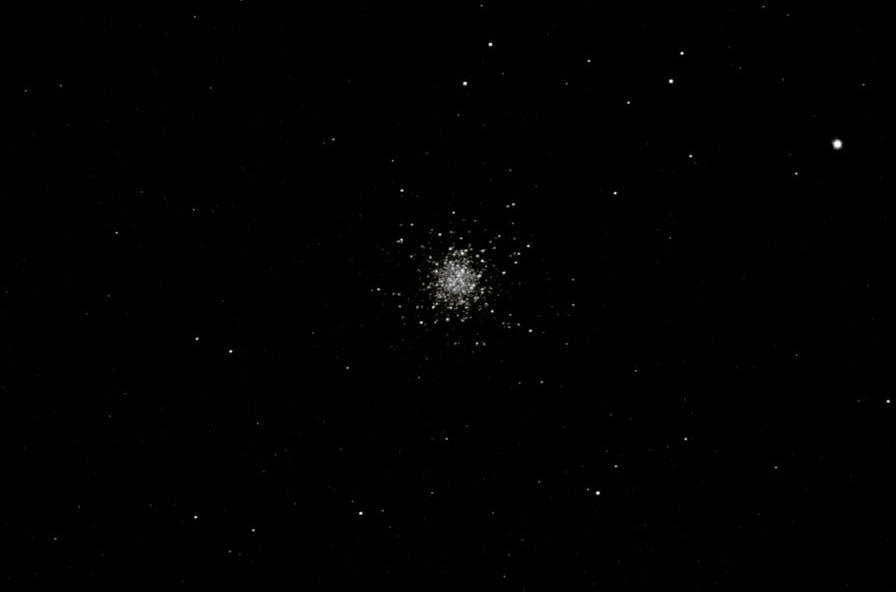|
The Night Sky of August
Dr. Wayne Wooten
Professor of Astronomy
For August 2011, the month starts with the waxing crescent moon in the western sky after sunset. On the 4th, it passes seven degrees south of Saturn in the SW sky, and
reaches first quarter phase on August 6th. It is full moon on August 13th, which alas means that it will wash out most of the famed Perseid meteors. The morning of August 12th is the peak for the Perseid Meteor
Shower, our best annual celestial fireworks show. If you have a dark sky site, you will see about a bright meteor every 5-10 minutes from midnight until dawn, despite the moonlight. They will seem to come out of the
constellation Perseus, rising in the NE just before midnight. The waning gibbous moon passes 5 degrees north of Jupiter in the morning sky on August 20th, then three degrees south of reddish Mars on August 25th. The
last two weeks find the moon waning in the morning sky, making the darker evening skies idea for observing the Milky Way.
Mercury will be visible in the evening sky in early August, just to the right of the crescent moon on August 1st. But it soon gets lost in the sun’s glare, where Venus also now lies. Mars is in the morning sky in
Taurus, rising about 4 AM. Jupiter rises in Aries about 2 AM at the start of August, and about midnight by month’s end. It is at opposition on October 29st, rising in the east at sunset and up all night. Those who
are used to seeing Jupiter will be glad to know its prominent south equatorial belt, which vanished last year, is apparently growing back to give the gaint planet is two racing stripes again. And of course, the four
Galilean moons are fun to watch with any backyard telescope. But the best telescopic treat is still Saturn, now moving eastward away from gamma Virginis in the southwestern sky. Enjoy the rings, now open about 8
degrees, for by the end of September it will be lost in the sun’s glare in the west.
The Big Dipper rides high in the NW at sunset, but falls lower each evening. Good scouts know to take its leading pointers north to Polaris, the famed Pole Star. For us, it sits 30 degrees (our latitude) high in the
north, while the rotating earth beneath makes all the other celestial bodies spin around it from east to west.
Taking the arc in the Dipper’s handle, we “arc” SE to bright orange Arcturus, the brightest star of Spring. Cooler than our yellow Sun, and much poorer in heavy elements, some believe its strange motion reveals it to
be an invading star from another smaller galaxy, now colliding with the Milky Way in Sagittarius in the summer sky. Moving almost perpendicular to the plane of our Milky Way, Arcturus was the first star in the sky
where its proper motion across the historic sky was noted, by Edmund Halley.
Spike south to Spica, the hot blue star in Virgo. Look for Saturn to the upper right of Spica, and drawing closer to it night by night as Saturn revolves around the sun in its slow 30 year orbit. From Spica curve to
Corvus the Crow, a four sided grouping. It is above Corvus, in the arms of Virgo, where our large scopes will show members of the Virgo Supercluster, a swarm of over a thousand galaxies about 50 million light years
away from us.
Hercules is overhead, with the nice globular cluster M-13 marked on your sky map and visible in binocs as seen in the photo. It is a good approximation of the cluster as seen through the eyepiece of a 6” telescope at
about 100X. Larger scopes reveal many more stars, of course. Several other good globular clusters are also shown and listed on the best binoc objects on the map back page.
The brightest star of the northern hemisphere, Vega dominates the NE sky. Binoculars reveal the small star just to the NE of Vega, epsilon Lyrae, as a nice double. Larger telescopes at 150X reveal each of this pair
is another close double, hence its nickname, the “double double”…a fine sight under steady sky conditions.
Below Vega are the two bright stars of the Summer Triangle; Deneb is at the top of the Northern Cross, known as Cygnus the Swan to the Romans. It is one of the most luminous stars in our Galaxy, about 50,000 times
brighter than our Sun. To the south is Altair, the brightest star of Aquila the Eagle. If you scan the Milky Way with binocs or a small spotting scope between Altair and Deneb, you will find many nice open star
clusters and also a lot of dark nebulae, the dust clouds from which new stars will be born in the future.
To the south, Antares rises about the same time in Scorpius. It appears reddish (its Greek name means rival of Ares or Mars to the Latins) because it is half as hot as our yellow Sun; it is bright because it is a
bloated red supergiant, big enough to swallow up our solar system all the way out to Saturn’s orbit!

The M-13 globular cluster in the constellation Hercules
East of the Scorpion’s tail is the teapot shape of Sagittarius, which marks the heart of our Milky Way galaxy. Looking like a cloud of steam coming out of the teapot’s
spout is the fine Lagoon Nebula, M-8, easily visible with the naked eye. This stellar nursery is ablaze with new stars and steamers of gas and dust blown about in their energetic births. In the same binocular field
just north of the Lagoon is M-20, the Trifid Nebula.
Read past issues of the Sky at Night
|